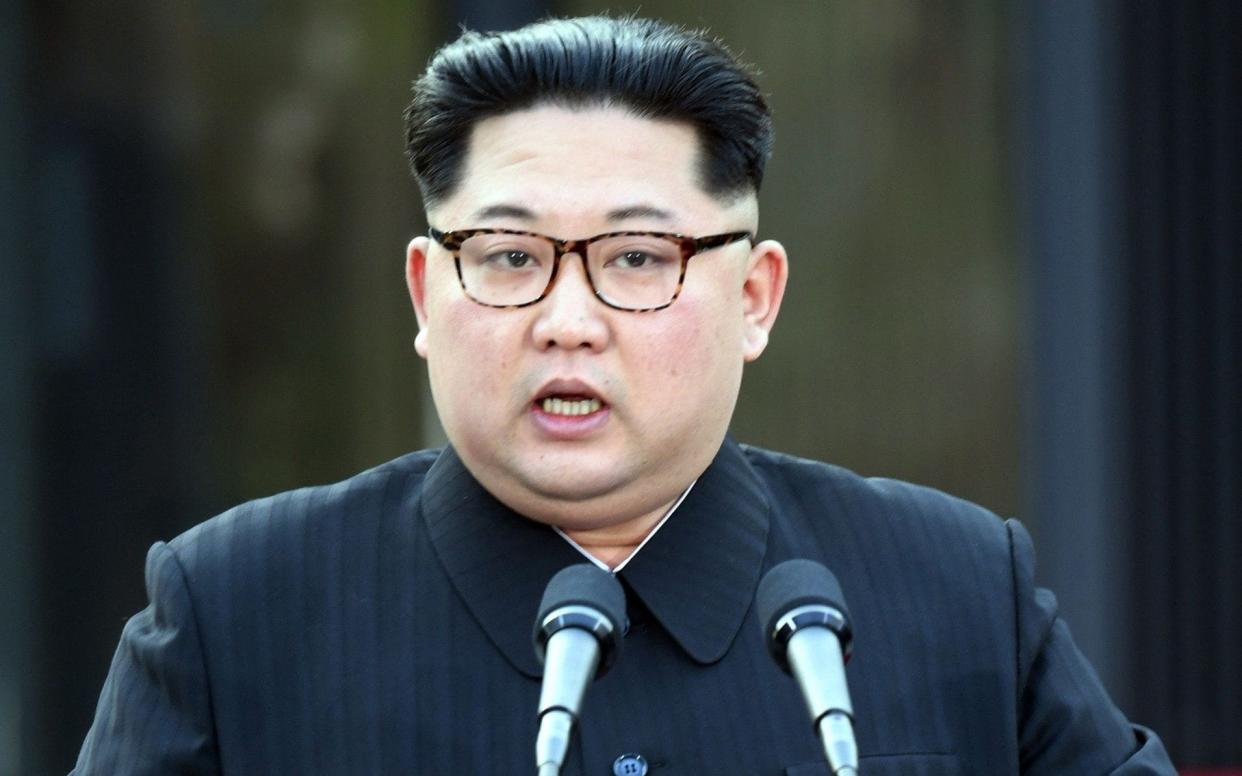Kim Jong-un: North Korea to allow foreign experts to witness nuclear site closure in May

North Korea’s leader Kim Jong-un has said that he will dismantle his country’s main nuclear testing site in May and invited South Korean and US experts, and journalists to view the process.
The dictator’s pledge was made to Moon Jae-in, South Korea’s prime minister, during their historic talks on Friday, according to Mr Moon’s spokesman.
As well as promising to close the Punggye-ri bomb testing site Kim said he would change North Korea’s time zone by half an hour, reverting it to match South Korea’s.
Reports of the pledge came as senior White House figures spoke optimistically about hopes for full North Korean denuclearisation.
Secretary of State Mike Pompeo, who held secret talks with Kim in Easter when he was still head of the CIA, said the US has an "obligation" to pursue a diplomatic solution with North Korea.
In an interview with ABC news, he said the US must "engage in diplomatic discourse to try and find a peaceful solution so that Americans aren't held at risk by Kim Jong Un and his nuclear arsenal".
Rocket man: How Kim Jong-un emerged from his father's shadow to silence the doubters
Kim and Mr Moon, meeting in a ‘truce village’ between their countries’ borders on Friday, pledged to work towards the “complete denuclearisation” of the Korean peninsular.
The meeting, which some analysts have criticised for not producing a timetable or firm plans for denuclearisation, came ahead of Kim’s scheduled talk with US President Donald Trump, expected within the next few weeks.
According to a team of Chinese geologists the Punggye-ri site may not be usable anyway, having suffered a land collapse following North Korea’s sixth nuclear bomb test in September 2017. However, Yoon Young-chan, Mr Moon's spokesman said that Kim claimed that the site still had new tunnels “in a very good condition”.
On Sunday Mr Yoon quoted Kim as saying: “Once we start talking, the United States will know that I am not a person to launch nuclear weapons at South Korea, the Pacific or the United States… if we maintain frequent meetings and build trust with the United States and receive promises for an end to the war and a non-aggression treaty, then why would be need to live in difficulty by keeping our nuclear weapons?”
Analysts have cast doubt over the meaningfulness of Kim’s pledges. Before Friday’s talks Jeffrey Lewis, director East Asia Nonproliferation Program at the Middlebury Institute of International Studies, said that Kim did not need the Punggye-ri site, and could “shift big tests to neighbouring mountains”.
Korean detente How did we get here?
Professor Tong Zhu, fellow in the Nuclear Policy Program at Beijing’s Carnegie–Tsinghua Center for Global Policy, told The Telegraph: “There is no way that North Korea is going to give up its nuclear deterrent capability.”
“North Korea worked so hard to obtain that capability in the first place. Its primary objective is to keep its nuclear capabilities, then the next priority is to address the negative consequences resulting from its nuclear development. Then to develop a normal relationship with the rest of the international community.”
On Sunday John Bolton, the US National Security Adviser, was asked by Fox News if the US making concessions to North Korea, such as easing sanctions, would require Kim to fully give up his nuclear weapons. "We have very much in mind the Libya model from 2003, 2004,” he replied.
Mr Bolton was referring to Libyan President Muammar Gaddafi allowing US and UK weapons inspectors to view and help dismantle the Libya’s nuclear and chemical weapons programmes around that time. Gaddafi’s move followed years of sanctions against Libya, but many US government officials claimed that the 2003 US invasion of Iraq was the biggest influence for him denuclearising.
Analysts have argued that Kim sees the fate of Gadaffi, who was toppled from power then killed in the Libyan civil war in 2011 after US forces attacked troops loyal to him, as a cautionary tale. Others have said that Mr Trump's recent threats to scrap the Iran nuclear deal, will make North Korea nervous about US promises.
Addressing the concerns, Mr Pompeo said last night/SUN: "I don't think Kim Jong Un is staring at the Iran deal and saying, 'Oh goodness, if they get out of that, I won't talk to the Americans any more,’. There are higher priorities that he is more concerned about than whether or not the Americans stay in the [Iran deal]."
With the clock ticking towards the historic Trump-Kim meeting, on Sunday Mr Yoon also suggested that Kim’s decision to alter North Korea’s time zone to match South Korea’s was made when he saw two wall clocks in a summit room showing different times for the two countries.
Mr Yoon said that Kim found it “heartbreaking” seeing the un-matched clock hands.
In August 2015 North Korea announced a new ‘Pyongyang time’ zone for the country, which was half an hour before Japan and South Korea’s time zone. The move was made to symbolically distance North Korea from Japan, which occupied the country from 1910 until 1945.
Pope Francis last night/SUN lauded Kim and Mr Moon for their "brave commitment... to follow a sincere path to peace towards a Korean peninsula free of nuclear weapons."

